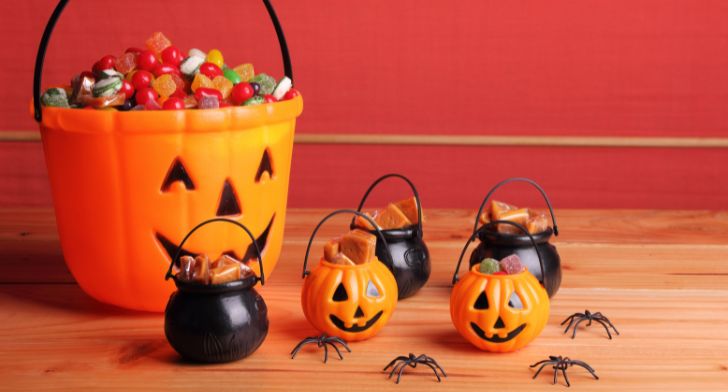Halloween brings joy, excitement, and, of course, mountains of candy! As parents, navigating the post-Halloween sugar rush can be challenging. It’s tempting to use candy as a reward, but fostering a healthy relationship with sweets early on can help kids develop balanced eating habits that last. Here are some practical tips on managing Halloween candy, creating healthy eating habits, and preventing candy-related tantrums.
1. Candy is Not Currency: Don’t Tie Candy to Meals
Using candy as a reward for finishing a meal may seem like an easy way to get kids to eat, but it can create an unhealthy association between sweets and other foods. When candy becomes a “prize” for eating vegetables or finishing dinner, it teaches kids that sweets are more desirable than other foods. Instead, separate candy from meals by offering it at designated times, like snack time. This approach allows kids to enjoy candy in moderation without it being a “reward” or the ultimate goal.
2. Set Clear Limits and Expectations
Before Halloween night, establish a plan with your kids about how candy will be handled. Let them know there will be specific times to enjoy their treats, such as after school or during a snack break. By setting these expectations upfront, they’ll be less likely to expect candy whenever they ask for it.
For instance:
- After Halloween night: Allow them to choose a few pieces of candy to enjoy.
- Post-Halloween: Set a daily limit and stick to it, like one or two pieces each day after school or dinner.
This routine keeps the treats special but under control, allowing kids to enjoy Halloween candy without feeling deprived.
3. Involve Kids in Choosing Treats
Allowing kids to choose their treats gives them a sense of control and ownership, making them feel empowered rather than restricted. Each day, they can pick a piece or two they really want, which helps them practice moderation and learn to savor what they choose. By giving kids some say in their candy choices, you’re also reinforcing that they can make mindful food choices on their own.
4. Encourage a Healthy Relationship with Candy
Candy doesn’t have to be “forbidden” to encourage healthy habits. When we treat candy as something completely off-limits, it can make it seem more desirable and lead to overeating when kids do get access to it. Instead, frame candy as a “sometimes” food, just like any other treat. When kids learn that they can enjoy a treat without guilt or overeating, it builds a balanced perspective around all types of food.
Talk to your kids about how candy fits into a balanced diet. Explain that while candy tastes great, it doesn’t give our bodies the same energy and strength that fruits, vegetables, and whole grains do. This can help them understand why sweets are occasional treats rather than everyday snacks.
5. Prevent Candy-Related Tantrums
Tantrums often stem from unmet expectations. When it comes to Halloween candy, clear communication and consistency are key. Here are a few tips to prevent those sugar-fueled meltdowns:
- Create a candy calendar: Kids love to anticipate treats, so create a small calendar or routine for candy time. Knowing when they’ll get to enjoy candy can reduce the impulse to ask for it constantly.
- Stay calm and stick to your plan: If your child has a meltdown because they can’t have another piece, try to stay calm and remind them of the plan you agreed upon. Consistency and calm repetition can help reinforce boundaries over time.
- Redirect their energy: After Halloween, kids often have an abundance of excitement (and perhaps a sugar buzz!). Engage them with fun activities like crafts, games, or even donating candy to a good cause.
6. Teach Mindful Eating Habits
Halloween is the perfect opportunity to teach kids mindful eating. Encourage them to savor each piece of candy they choose and enjoy the experience rather than rushing through it. Ask them questions like, “What’s your favorite part about this candy?” This approach not only helps them appreciate treats more fully but also encourages them to listen to their own hunger and satisfaction cues.
Halloween candy is part of the fun, and finding a balanced way to enjoy it can set the stage for healthy habits year-round. By establishing clear limits, involving kids in candy choices, and separating candy from meal rewards, you’re helping them build a balanced relationship with sweets. Remember, candy is a treat—not a currency—and with a little planning, it can be an enjoyable part of the Halloween experience without any trickery!







